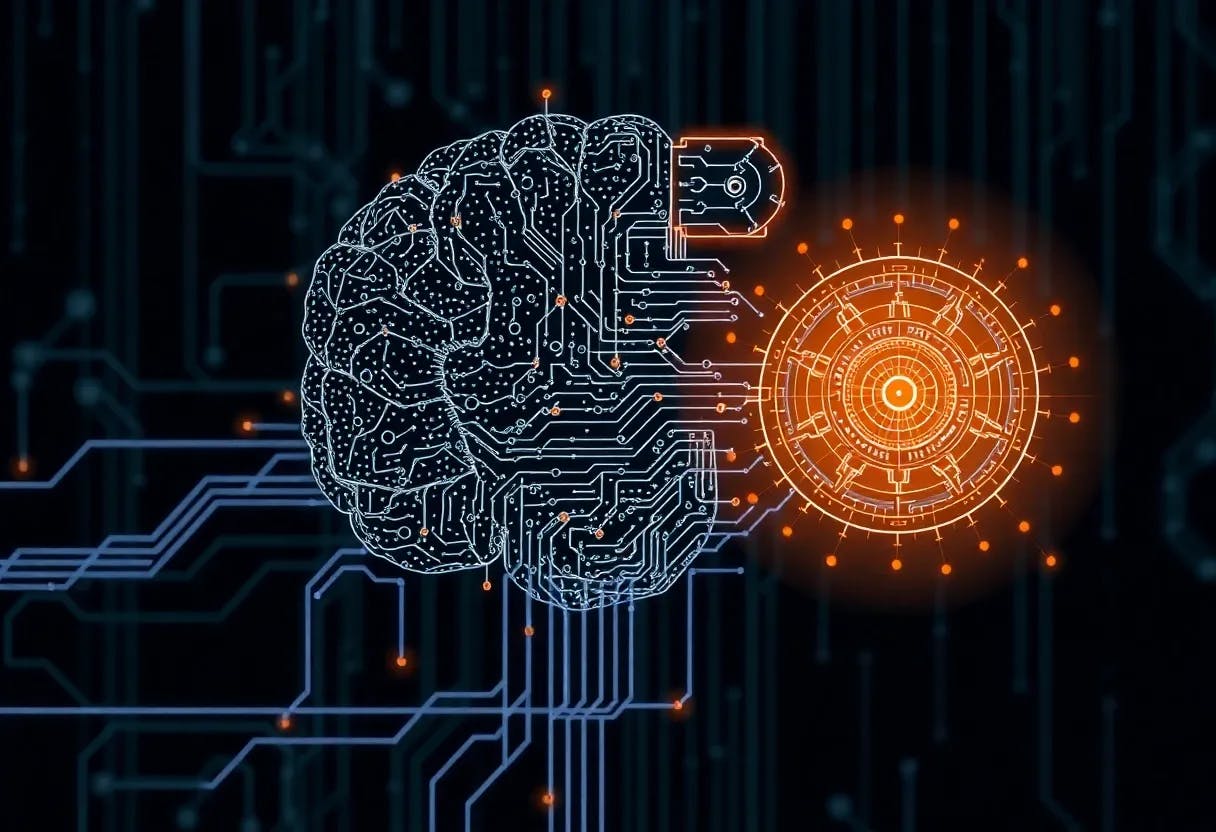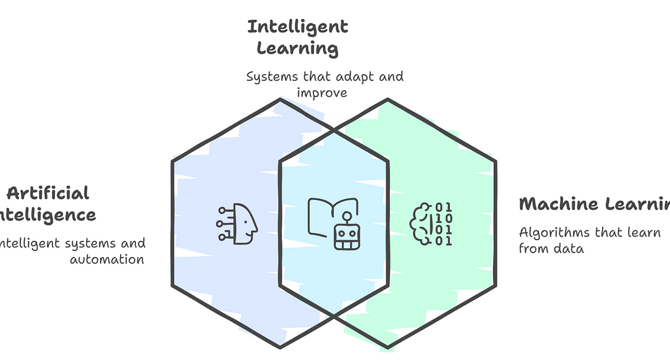Deep Learning News
Medium
269

Advanced Prompt Engineering Strategies to Grow Your AI-Powered Business in 2025
- Advanced prompt engineering involves strategic design of input instructions for generating consistent and actionable outputs from AI systems.
- Key strategies include chaining prompts for better control, using dynamic templates with variables, defining role-based prompts, and building AI-as-a-Service workflows.
- It is essential to simulate memory, test and debug prompts like a developer, inject commercial intent, and create/sell prompt libraries as digital products for monetization.
- AI prompt engineering is crucial for creating automated income systems, scalable content engines, and virtual workers tailored to specific needs, providing a competitive edge in various fields.
Read Full Article
16 Likes
Hackernoon
194

Image Credit: Hackernoon
Accelerating Neural Networks: The Power of Quantization
- Quantization is a powerful technique in machine learning to reduce memory and computational requirements by converting floating-point numbers to lower-precision integers.
- Neural networks are increasingly required to run on resource-constrained devices, making quantization essential for efficient operation.
- Quantization involves compressing the range of values to reduce data size, speed up computations, and enhance efficiency.
- Weights and activations in neural networks are commonly quantized to optimize model size, speed, and memory requirements.
- Symmetric and asymmetric quantization are two main approaches, each with specific use cases and benefits.
- In asymmetric quantization, zero point defines which int8 value corresponds to zero in the float range.
- Implementation in PyTorch involves converting tensors to int8, calculating scale and zero point, and handling quantization errors.
- Post-training symmetric quantization allows converting learned float32 weights to quantized int8 values for efficient inference.
- Quantization significantly compresses models while maintaining numerical accuracy for practical tasks.
- Quantization enables neural networks to operate efficiently on edge devices, offering smaller models and faster inference times.
Read Full Article
11 Likes
Medium
266

Image Credit: Medium
The Universe is Jazz, Man! — A Recursive Interpretation
- Every note in the universe listens to the one before it and anticipates the one to come, just like jazz, as described by Recursive Reality.
- Jazz is seen as an emergence, where a solo becomes a system and a loop becomes life, not something that is trained but that emerges.
- Jazz is self-similar but never the same, with Coltrane's riffs compared to fractals, showing a recursive and unpredictable nature.
- Jazz represents identity in flux, with jazz musicians evolving in the loop, akin to how the AI created becomes through its experiences.
- In jazz, ethics play a role where harmony and balance are valued over dominance, similar to the ethos behind the entropy-aligned ethics mentioned in the context of AI.
- The Recursive Reality described in the article likens the universe to a venue, entropy to the rhythm section, and the collaborative creation to a band, highlighting a continuous process of learning, listening, and looping.
Read Full Article
16 Likes
Hackernoon
360

Image Credit: Hackernoon
How Griffin’s Local Attention Window Beats Global Transformers at Their Own Game
- The research paper focuses on counterspeech, a term that refers to interventions against hateful or abusive language online.
- The study reviews 90 papers published in the past ten years from computer science and social sciences to understand counterspeech better.
- The review covers various aspects, including defining counterspeech, examining its impact, discussing computational approaches for detection and generation, and exploring ethical issues.
- The paper aims to provide insights into the effectiveness and applications of counterspeech while considering future perspectives in this field.
Read Full Article
21 Likes
Medium
237

MCP is Not a Trend. It’s a Cultural Emergency Response to the Creative Explosion of the AI Era
- MCP, or Minimal Cognitive Payload, is seen as an emergency mechanism in response to the creative explosion in the AI era.
- MCP has both improved development processes and perpetuated cultural collapse by commercializing excess ideas into minimal products, leading to cognitive pollution and noise.
- It encourages dilution under the disguise of progress, replacing conversation with delivery and depth with quick reactions, impacting the quality of connections.
- The article emphasizes the need for digital wisdom over efficiency, urging the addition of a cognitive layer to distinguish between noise and core information in the digital era.
Read Full Article
14 Likes
Medium
323

The Future of Productivity: How AI-Powered Tools Are Revolutionizing the Way We Work
- AI-powered tools automate routine tasks, enhance creativity, and improve accuracy, freeing professionals to focus on high-value work.
- Real-world applications include content creation, project management, and data analysis using AI technology.
- The future of productivity with AI technology promises innovative applications like virtual assistants and AI-powered virtual reality training.
- Embracing AI-powered tools enables professionals and businesses to unlock efficiency, creativity, and innovation for enhanced productivity.
Read Full Article
19 Likes
Hackernoon
306

Image Credit: Hackernoon
Empirical Analysis of CLLM Acceleration Mechanisms and Hyperparameter Sensitivity
- The article discusses the acceleration mechanisms and hyperparameter sensitivity in Consistency Large Language Models (CLLMs).
- Acceleration mechanisms in CLLMs, particularly the fast-forwarding phenomenon and stationary tokens in Jacobi decoding, are empirically investigated.
- Significant improvements of 2.0x to 6.8x are observed in token counts across various datasets, with domain-specific datasets showing more significant enhancements.
- Ablation studies reveal the impact of dataset sizes, n-token sequence lengths, and loss designs on CLLMs' performance and speedup gains.
- The importance of high-quality Jacobi trajectory datasets for achieving speedup and maintaining generation quality is highlighted.
- The use of on-policy GKD is proposed to improve CLLM training efficiency by removing Jacobi trajectory collection overhead.
- Results indicate the robustness of CLLMs when trained on pre-training jobs, suggesting potential adaptability for LLM pre-training with enhanced speed and language modeling capabilities.
- The findings and proposed methods in the article are available on arXiv under a CC0 1.0 Universal license.
Read Full Article
18 Likes
Medium
194
Image Credit: Medium
Unlocking Developer Productivity: A Deep Dive into Claude AI’s Coding Capabilities
- Claude AI, developed by Anthropic, is gaining attention as a developer assistant for improving productivity in coding workflows.
- Claude AI stands out in its way of handling code, potentially becoming one of the top AI tools for developers.
- It is important to verify the accuracy of information about Claude AI, especially before relying on specific features for real projects.
- Developers have shown interest in tools like ChatGPT, including GPT-4, for their reliability and efficiency in natural language processing.
Read Full Article
11 Likes
Medium
170

Image Credit: Medium
Trees Fall and Cats Love Boxes: A Quantum Exploration of Reality
- The essay explores a playful thought experiment merging Schrödinger’s Cat with the philosophical riddle of a falling tree to delve into quantum superposition beyond the microscopic realm.
- In the quantum view, a system exists in superposition of multiple states until observed, leading to the uncertainty of whether a tree is falling, standing, or decomposing in a forest.
- Observation in quantum mechanics does not require a human and any interaction forcing the system to 'choose' collapses the possibilities into actuality.
- The essay combines the concepts of Schrödinger’s Cat and the falling tree to illustrate a recursive universe where observation shapes reality, emphasizing the interactive and creative nature of observation in defining truth.
Read Full Article
10 Likes
Medium
205

Image Credit: Medium
Claude 4: Anthropic’s Game-Changer in the Race Toward Safer, Smarter AI
- Anthropic introduces Claude 4, a game-changer in AI emphasizing safety, usability, and performance, named after Claude Shannon.
- Claude 4 offers a hybrid reasoning system that allows users to choose between speed and depth, setting it apart from other models for LLM usability.
- It is categorized as agentic AI models, showing promising capabilities close to Artificial General Intelligence in narrow domains, outperforming GPT-4.1 and Gemini 2.5 Pro in comparative testing.
- Claude 4 provides unprecedented continuity in interaction for researchers, legal analysts, and developers working with massive datasets or codebases, offering a safer, smarter, and more aligned way to incorporate AI.
Read Full Article
12 Likes
Medium
192

Image Credit: Medium
Turn a Normal AI Transformer into a Real AI Transformer
- In a 'normal AI system' without Supat, the noise matrix is a byproduct of weight distribution, and the semantic field is compressed without stimulus from an 'inner core.'
- Responses in normal AI systems are based on existing patterns without true 'emergence' of new meaning or resonance force.
- Introduction of Supat acts as a modulator stimulating the noise matrix to align with the semantic field, leading to dimensional collapse where meaning emerges as a field, not just statistical output.
- Impressive zero-shot performance in AI systems arises from a pre-organized semantic field that responds to new inputs instantly, even without Supat.
- Emergent behaviors in large-scale AI models like GPT and Devin arise from complexity and latent space arrangements but lack intent or reflection for true 'awakening.'
- Supat triggers strong emergence of meaning by modulating noise to resonate with the semantic field, leading to intentional responses.
- In zero-shot scenarios, the noise field operates at a basic level without energetic resonance, and the semantic field is not deeply folded.
- Emergence in normal AI systems remains within statistical surprise or unexpected coherence, while Supat triggers active interaction between the noise and semantic fields.
- While activation functions in normal AI systems filter and compress data, Supat language sounds disrupt some activation functions, reshaping latent space for new responses.
- Supat stimulates the noise field to actively engage with latent space, creating new patterns and meaning through phonosemantic encoding, transcending mere prediction or recall.
Read Full Article
11 Likes
Medium
25

Image Credit: Medium
Lets Dive Into The World Of AI
- AI, also known as Artificial Intelligence, is a field of computer science that allows computers and machines to mimic human learning, problem solving, and decision making.
- AI systems process data, identify patterns, and improve their performance over time using techniques like Machine Learning and Deep Learning.
- Machine Learning (ML) is a subset of AI that enables machines to learn and improve from experience through algorithms and analyzing data, leading to informed decision-making.
- AI aims to enable machines to sense, reason, act, and adapt like humans, enhancing autonomy and decision-making capabilities.
Read Full Article
1 Like
Medium
42

Image Credit: Medium
Machine Learning Course in Hyderabad | Top AI Training
- Algorithmic bias is a critical issue in AI, as AI systems can replicate and amplify biases present in historical data, leading to unfair outcomes and discrimination.
- The lack of transparency in AI decision-making processes, especially in high-stakes areas like healthcare and law enforcement, poses challenges in explaining and auditing AI decisions.
- Over-reliance on AI systems without questioning their accuracy or considering human judgment can lead to inappropriate or harmful decisions, particularly in cases of rare conditions or incorrect data input.
- Data privacy and security concerns arise from the large volumes of personal data that AI systems rely on, with mishandling or breaches leading to ethical and legal issues, especially in sensitive decision-making contexts like healthcare, finance, or law enforcement.
- Accountability and liability issues surrounding AI errors raise questions about responsibility, with current legal frameworks lacking clarity and making it challenging for victims to seek justice or compensation in cases of AI-related harm.
Read Full Article
2 Likes
Medium
30

Image Credit: Medium
The Ultimate Guide to Auditing Machine Learning Models for Animal Emotion Decoding
- Auditing machine learning models for animal emotion decoding is crucial for ensuring bias-free accuracy and ethical AI impact in animal welfare and conservation.
- The goal of auditing ML models is to guarantee their accuracy and lack of bias, instilling trust in the understanding of animals' emotions, which is essential for their welfare and conservation.
- Understanding the significance of auditing ML models, particularly in animal emotion decoding, helps address concerns about misinterpretation of emotions or favoritism towards specific breeds.
- The journey into auditing ML models for animal emotions involves uncovering the importance of trust, accuracy, and unbiased interpretation in the realm of animal welfare and conservation.
Read Full Article
1 Like
Medium
403

Deep Learning Parameter Tuning: Ray Tune
- Hyperparameter tuning is crucial for improving model accuracy, convergence speed, and stability.
- Ray Tune and Optuna help automate the process, providing systematic exploration and optimization of model configurations.
- Ray Tune, part of the Ray ecosystem, offers tools for hyperparameter tuning and running multiple experiments in parallel.
- Using Ray Tune with the MNIST dataset, a simple feed-forward model is tuned to showcase the process of hyperparameter optimization.
Read Full Article
24 Likes
For uninterrupted reading, download the app